Contents
- 1 Elon Musk's Net Worth Over Time (1999–2025)
- 2 Elon Musk’s Innovation Timeline
- 3 Early Life and Educational Background
- 4 Test Your Elon Musk Knowledge!
- 5 Current Net Worth and Wealth Composition
- 6 How Did Elon Musk Become Rich: Strategic Business Moves
- 7 First Steps Into Business: Zip2 Success
- 8 X.com to PayPal: The Fintech Revolution (1999–2002)
- 9 SpaceX: Revolutionizing Space Industry
- 10 Tesla Motors: Electric Vehicle Empire
- 11 SolarCity
- 12 Neuralink and Brain-Computer Interface Ventures
- 13 The Boring Company and Infrastructure Innovation
- 14 Twitter Acquisition and Social Media Impact
- 15 xAI – Elon Musk’s Answer to Sam Altman’s OpenAI
- 16 Poll: Which Elon Musk Company Has the Biggest Impact?
- 17 Business Philosophy and Investment Strategy
- 18 Political Influence and Government Connections
- 19 Future Business Ventures and Growth Potentials
Elon Musk’s path to wealth is a captivating story of tech innovation and smart business moves. Starting from a humble background, Musk became a global tech leader. His journey is not just about money; it’s about changing the world with his vision.
In the Dot-Com Boom, Musk showed his business genius. In 1999, he made $22 million by selling Zip2 to Compaq for $307 million. This was just the start of his billionaire success story, leading to even bigger achievements.
Musk’s big win was PayPal, sold to eBay for $1.5 billion in 2002. Musk received about $175–$180 million from the PayPal sale because he was the largest shareholder with 11.7% of shares. He has stated that he invested $100 million in SpaceX, $70 million in Tesla, and $10 million in SolarCity. This turned his passion for technology into a wealth-building machine.
Key Takeaways
- Elon Musk’s path to wealth began with the sale of Zip2 in 1999, earning him $22 million
- He co-founded X.com, which became PayPal and was sold to eBay for $1.5 billion in 2002, netting Musk about $175–$180 million
- He invested $100 million in SpaceX, $70 million in Tesla, and $10 million in SolarCity
- As of March 2025, Musk’s net worth is estimated at around $330 billion, with his largest assets being stakes in Tesla and SpaceX
- Musk was an early investor and later CEO of Tesla, which was founded by Martin Eberhard and Marc Tarpenning
- He founded SpaceX in 2002, Neuralink in 2016, and The Boring Company in 2017
- Musk acquired Twitter (now X) in 2022 for $44 billion and launched xAI in 2023
- While Musk and his companies have received significant government contracts and subsidies, specific political spending figures are not widely reported or confirmed
Elon Musk's Net Worth Over Time (1999–2025)
Elon Musk’s Innovation Timeline
Early Life and Educational Background
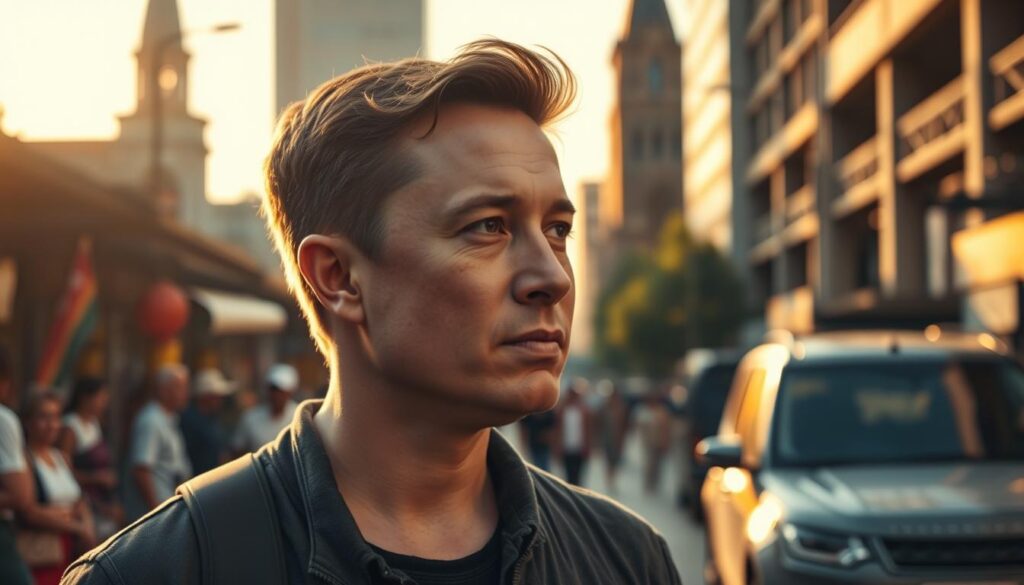
Elon Musk was born on June 28, 1971, in Pretoria, South Africa. His family was full of successful people. His mom, Maye Musk, was a model and dietitian. His dad, Errol Musk, worked as an electromechanical engineer and property developer.
Musk’s early life was not easy. He went to Pretoria Boys High School, where he faced bullying and felt isolated. These struggles helped shape his strong entrepreneurial spirit.
Childhood Entrepreneurial Beginnings
Musk showed his business skills early. At 12, he made a video game called “Blastar” and sold it for $500. He also loved computer programming and was very skilled for his age.
International Educational Pursuit
Musk’s education path was different. He moved to Canada at 17 and went to Queen’s University in Ontario. Later, he went to the University of Pennsylvania. There, he earned two bachelor’s degrees in economics and physics.
Key Educational Milestones
Musk’s education was marked by:
- Graduating from the University of Pennsylvania in 1995
- Got accepted into Ph.D. program in 1995 in materials science and engineering at Stanford University
- Leaving after two days to start his own business later called Zip2 which operated in a similar manner to the Yellow Pages by offering a searchable directory of business listings with integrated maps and directions
These experiences prepared Musk for his future as a leading entrepreneur and innovator. They set the stage for his impressive business career.
Test Your Elon Musk Knowledge!
Current Net Worth and Wealth Composition
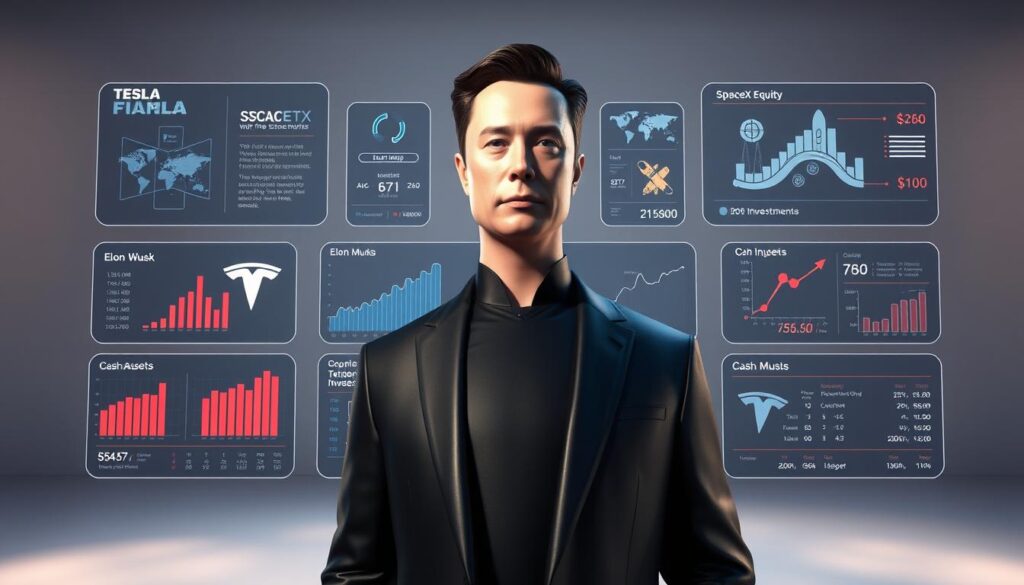
Elon Musk’s net worth is a wild ride that keeps everyone guessing. As of March 2025, his wealth is a staggering $330 billion according to the Bloomberg Billionaires Index after peaking at $486 billion in December 2024. This huge number shows Musk’s incredible business skills.
Let’s look at Musk’s wealth in more detail:
- Musk owns about 13% of Tesla as of 2025
- Tesla stock makes up a large part of his net worth, but as of early 2025, SpaceX (valued at $350 billion) is his largest asset, with Musk holding a 42% stake
- X (formerly Twitter), Neuralink, and The Boring Company bring in different kinds of money
In 2020, he got 1.69 million Tesla shares worth around $800 million due to a specific tranche of a performance-based pay package,. That’s a huge paycheck!
Musk’s wealth has seen big ups and downs. His net worth hit $400 billion in December 2024, making him the first to reach that mark. Political ties and stock market ups and downs have changed his wealth. But he’s always among the richest people in the world.
It’s interesting that Musk’s pay is linked to Tesla’s stock performance. A 2024 lawsuit questioned his $55 billion pay package. But a shareholder vote approved it. His success in creating wealth through new companies keeps the world watching.
How Did Elon Musk Become Rich: Strategic Business Moves

Elon Musk’s wealth comes from smart business moves that changed many industries. He started with new tech ideas and took big risks. His knack for spotting new markets made him stand out.
Key strategies in Musk’s business approach included:
- Leveraging technological disruption
- Creating multiple revenue streams
- Attracting significant venture capital
- Utilizing government incentives
Musk’s business plan started with early wins. At 12, he sold his first video game “Blastar” for $500. By 1995, he co-founded Zip2 with his brother Kimbal, starting with $28,000. They sold it to Compaq for over $300 million.
Musk’s wealth plan was to keep investing and growing. After selling Zip2, he launched X.com. It merged with Confinity to become PayPal. eBay bought PayPal for $1.5 billion in 2002, making Musk $180 million.
Musk mixed tech innovation with smart marketing. He used social media and public talks to boost his companies’ stocks. This created a cycle of wealth growth in his ventures.
Every new venture, from SpaceX to Tesla, showed Musk’s skill in spotting tech chances. By pushing tech limits and getting big investments, he changed industries and grew his wealth fast.
First Steps Into Business: Zip2 Success

In 1995, Elon Musk made his first big move with Zip2. This web software company was his first step towards success. He started it with his brother Kimbal Musk and Gregory Kouri. They used money borrowed from Elon’s pmpmplbusiness directory with maps. This made it easy to find local businesses and their details.
- Founded in 1995 in Silicon Valley
- Pioneered online local business directories
- Secured $3 million investment from Mohr Davidow Ventures in 1996
- Partnered with major newspapers like The New York Times
Starting Zip2 wasn’t easy. Musk and his team had to overcome many hurdles. But in 1996, Mohr Davidow Ventures gave them $3 million. This showed they were on the right track.
Zip2’s partnerships with big newspapers helped it grow. By 1999, Compaq Computer Corp. bought it for $307 million. Musk made $22 million from this deal. It gave him the money to start his next big projects.
Zip2 was more than just a success. It was Musk’s first lesson in building a tech company. He learned about being resilient, innovative, and solving problems with technology.
X.com to PayPal: The Fintech Revolution (1999–2002)
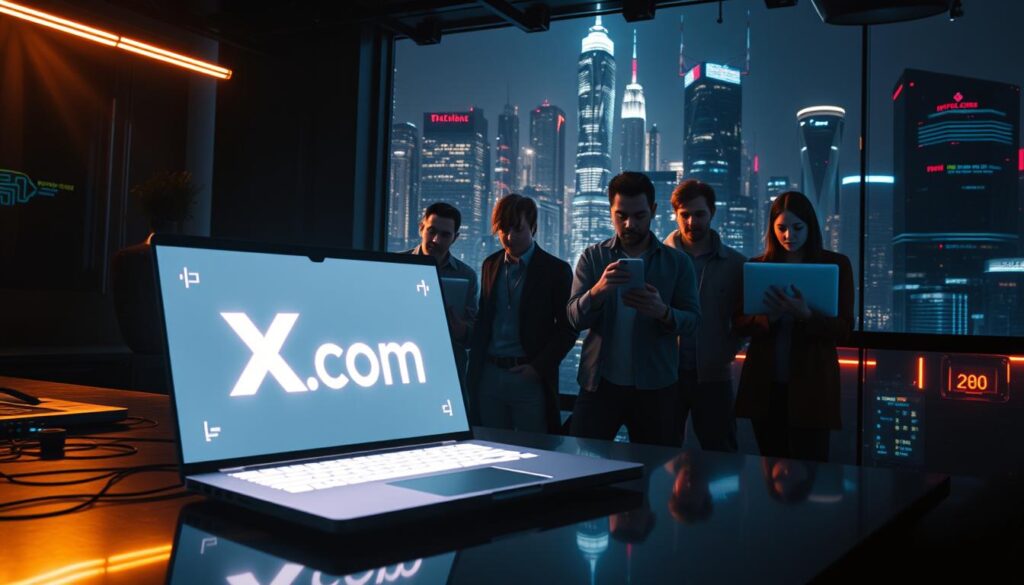
In the late 1990s, Elon Musk started X.com, a digital banking and payment platform. It was launched in March 1999 in Palo Alto, California. Musk aimed to change traditional banking with new digital solutions.
The Birth of a Fintech Powerhouse
X.com quickly drew attention from Confinity, another fintech company. In March 2000, they merged, creating PayPal. This move put PayPal at the top of digital payment innovation.
Musk’s Strategic Role in PayPal’s Success
Musk was key in shaping PayPal’s direction after the merger. The company became PayPal in 2001, focusing on digital payments. Musk’s contributions included:
- Investing $12 million of his own money
- Driving technological innovation
- Attracting major investor interest
The Lucrative eBay Acquisition
In July 2002, eBay bought PayPal for $1.5 billion. Musk, with 11.72% of shares, made $175.8 million. This money helped fund his future ventures like SpaceX and Tesla.
Musk’s work on X.com and PayPal showed his skill in spotting and using new fintech opportunities.
SpaceX: Revolutionizing Space Industry
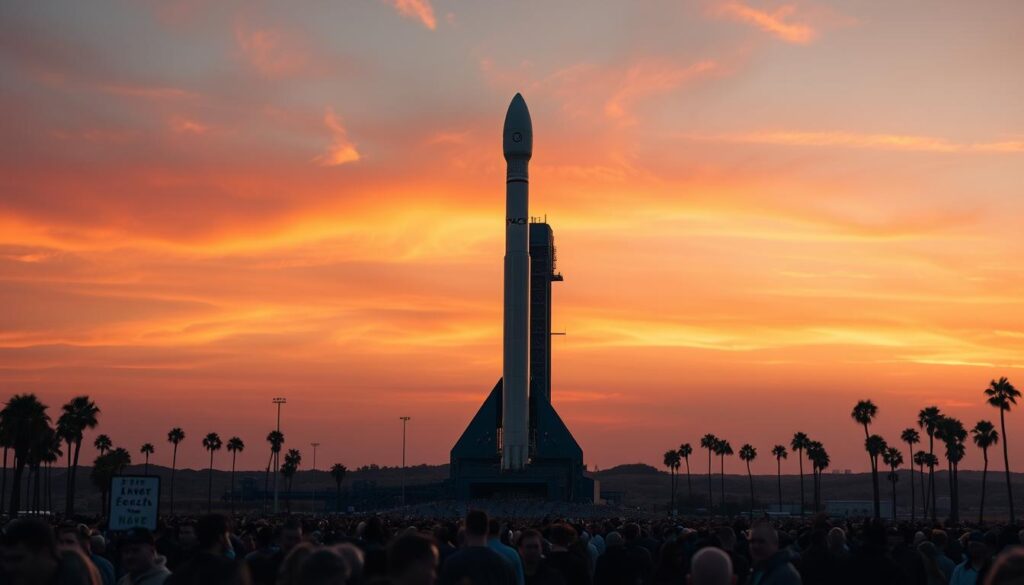
Elon Musk’s SpaceX changed the space industry with new ideas and a clear plan. In 2002, Musk used $100 million from PayPal to start SpaceX. His dream was to make space travel cheap and available to everyone.
SpaceX’s early days were tough. Musk’s team faced many rocket launch failures, almost bankrupting the company. But in 2006, they made a huge leap with the Falcon 1 rocket. This moment was a turning point for Musk in the space industry.
Innovative Approach to Space Technology
SpaceX’s big idea was to make rockets reusable. This idea cut down the cost of space travel a lot. They made some key changes:
- Developing the Falcon 1 rocket
- Creating reusable rocket technology
- Implementing iterative design methods
- Pursuing ambitious Mars colonization objectives
Government and Commercial Contracts
SpaceX’s big win was getting NASA contracts. They became the first private company to send a spacecraft to the International Space Station. This showed they were tech-savvy and brought in a lot of money.
Starlink, SpaceX’s satellite internet project, is another big step. It aims to create a global satellite network. This move could make SpaceX even more profitable than just space exploration.
Tesla Motors: Electric Vehicle Empire

Elon Musk’s work with Tesla Motors changed the car world. Tesla became a key part of Musk’s success and innovation. In February 2004, Musk led the Series A funding round, investing $6.35 million, became chairman, and later became CEO in 2008.
Musk’s electric car plan changed the car industry. Tesla’s success came from new designs and tech that changed car making. Important moments in Tesla’s journey include:
- Creating high-performance electric cars
- Making the first electric car for the masses
- Building a strong charging network
- Improving battery tech
Government help was key to Tesla’s growth. The company got big financial boosts, including:
- $1.3 billion from Nevada for a battery factory
- $11.4 billion in regulatory credits
- $465 million low-interest Department of Energy loan
- $7,500 federal tax credit per car
By 2022, Tesla was the world’s most valuable carmaker. Musk’s dream of green transport turned Tesla from a small startup to a big car company. This greatly increased Musk’s wealth and changed the electric car market.
SolarCity
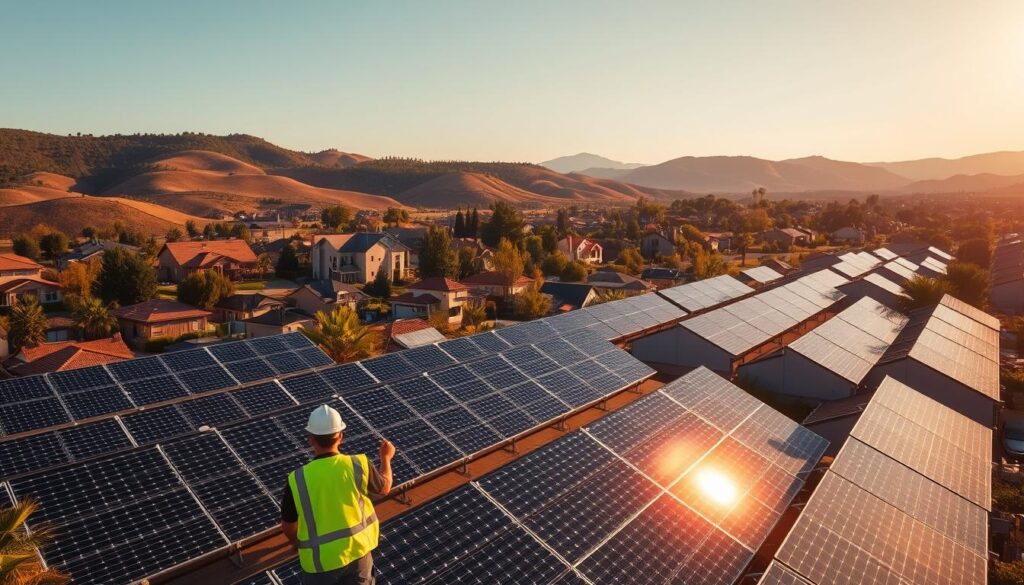
Elon Musk’s dream for clean energy took a big step forward with SolarCity. This solar energy company was started in 2006 by his cousins, Peter and Lyndon Rive. Musk didn’t just invest money; he also gave important advice that changed the solar industry.
The company introduced a new way to get solar energy. People could get solar panels without paying anything upfront. This made clean energy available to more people, leading to fast growth and lots of attention.
- Founded in 2006 by Musk’s cousins
- Pioneered solar panel leasing strategy
- Raised $81 million in institutional funding
- Targeted $1.5 billion IPO valuation
In 2016, Tesla bought SolarCity for $2.6 billion. This move brought solar technology together with electric cars. Musk owned 25% of SolarCity, making him a key player in this green energy project.
| Key Metrics | Details |
|---|---|
| Acquisition Value | $2.6 Billion |
| Musk’s Ownership Stake | 25% |
| Funding Round | $81 Million |
The SolarCity deal showed Musk’s plan for clean energy. He wanted to create systems that work together, not just stand alone. By linking solar power with electric cars, Musk showed he could think big and challenge old ways.
Neuralink and Brain-Computer Interface Ventures

Elon Musk’s Neuralink is a major step forward in neurotechnology. It started in June 2016 with a dream to create advanced brain-computer interfaces. Musk brought together seven experts in science and engineering to make this dream real.
The technology at the heart of Neuralink is about connecting the brain in new ways. They made ultra-thin probes and a special robot for surgery. This robot can put in 1,500 electrodes to read brain signals very accurately.
- Founded in 2016 with $158 million in funding
- Received FDA approval for human clinical trials in 2023
- Successfully implanted neural devices in human patients
- Developed cutting-edge neural interface technology
Neuralink’s goals are huge and exciting. The Blindsight project wants to help people see again if they can’t. By 2024, they made big steps. People could control computers and make 3D designs just by thinking.
Musk put in $100 million of his own money. This shows how much he believes in this technology. Neuralink’s work could change how we understand and use our brains.
The Boring Company and Infrastructure Innovation
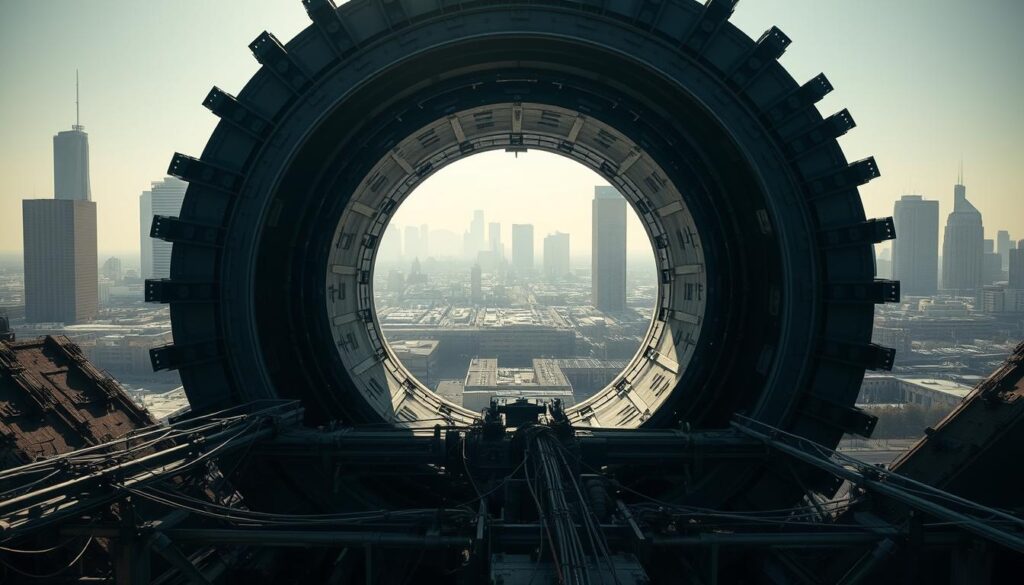
Elon Musk’s Boring Company started in 2017, changing how we think about underground travel. It’s a bold move to tackle city traffic with new tunneling tech. Musk made digging tunnels exciting, turning a simple task into a high-tech adventure.
The Las Vegas Convention Center Loop is a big win for the company. It’s a 1.7-mile tunnel system that makes getting around much faster. Musk plans to add 68 miles of tunnels, with $675 million in funding and a $5.675 billion valuation. Their machines, like the Prufrock series, can dig up to 46 meters a day.
- Completed innovative tunnel projects in Las Vegas
- Developed autonomous tunneling technology
- Proposed ambitious transportation solutions
- Created unique revenue streams through creative marketing
Musk’s marketing is as bold as his tech. The “Not-a-Flamethrower” sold for $10 million, showing innovation in sales too. The Boring Company is working on projects like a 16-mile tunnel in Dubai, always pushing the limits.
The company is not just about tunnels. They’re using new methods like “porpoising” and self-driving trucks to cut costs. This is a new way to tackle city traffic problems.
Twitter Acquisition and Social Media Impact
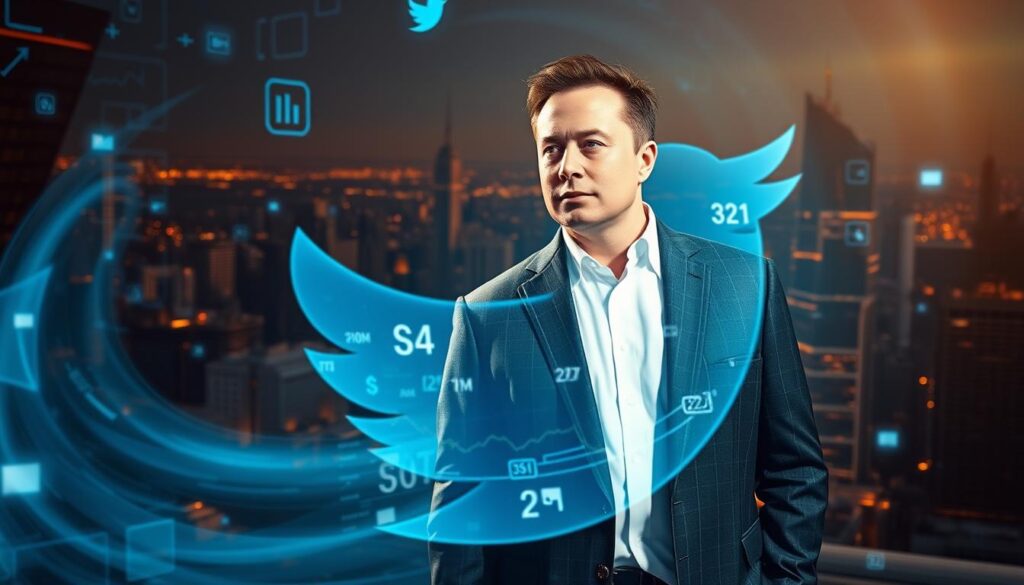
Elon Musk’s buy of Twitter was a big deal in social media history. The $44 billion deal started on April 14, 2022, and ended on October 27, 2022. It changed Twitter a lot. Musk showed his big influence right away with his bold moves.
The deal wasn’t easy. Twitter’s board tried to stop Musk with a “Poison pill” strategy. Important moments included:
- Firing top executives, including former CEO Parag Agrawal
- Proposing open-source algorithm reforms
- Combating spambot accounts
- Issuing an ultimatum that led to hundreds of employee resignations
Rebranding and Strategic Transformation
Musk quickly changed Twitter to X. This showed a big change in the platform’s direction. He picked Linda Yaccarino as CEO, showing his plan to change social media.
Financial Implications
Musk used his money from Tesla and SpaceX to buy Twitter. Despite Twitter’s money problems, Musk saw it as key for talking to people.
He wanted to make sure people could speak freely online. The deal showed Musk’s bold way of doing business. He always tries to shake things up.
xAI – Elon Musk’s Answer to Sam Altman’s OpenAI
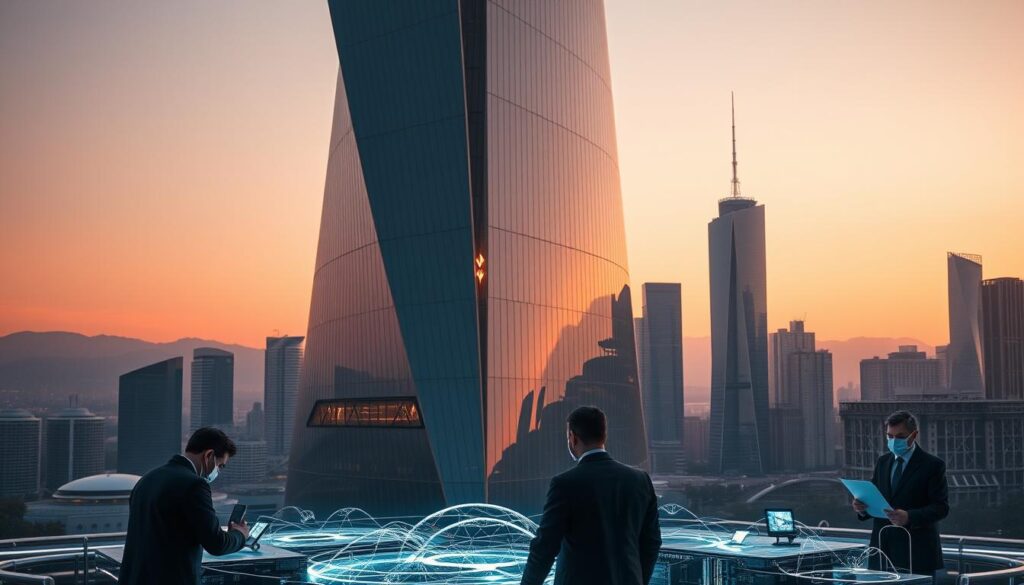
Elon Musk started xAI in 2023, aiming to understand the universe. This move is a big step in Musk’s tech empire. It challenges AI leaders like OpenAI.
xAI is a big step in AI research. It’s valued at $50 billion and is a strong player in AI. Its product, Grok, is special and available on X (formerly Twitter) for premium users.
- Founded in 2023 with a $50 billion valuation
- Developed Grok AI platform
- Integrated with X social media platform
- Aims to explore fundamental universal understanding
Musk’s xAI is building a huge supercomputer in Memphis, Tennessee. This shows the company’s dedication to AI. It’s competing with OpenAI and others.
| Company | Valuation | Key Focus |
|---|---|---|
| xAI | $50 billion | Universal understanding |
| OpenAI | $157 billion | General AI research |
Musk, worth $392 billion, loves big tech projects. xAI is more than a business. It’s a quest to understand the universe with AI.
Poll: Which Elon Musk Company Has the Biggest Impact?
Business Philosophy and Investment Strategy
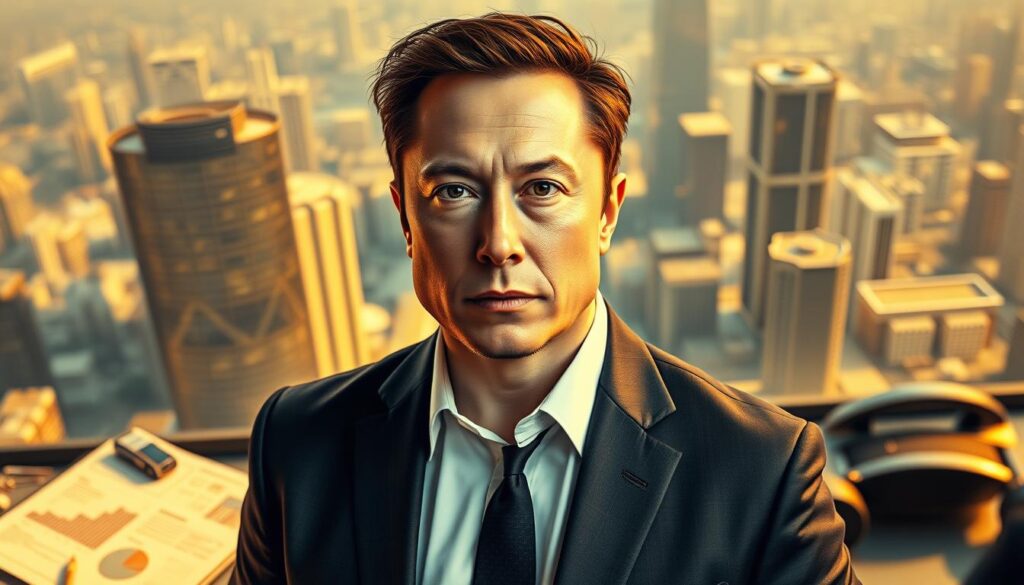
Elon Musk’s business philosophy goes beyond the usual investment methods. He focuses on technologies that can change the world. Musk doesn’t just put money into projects; he creates companies that can change industries.
Musk’s investment strategy is all about making big bets on solving big problems. He puts his money into key areas of technology:
- Sustainable energy (Tesla)
- Space exploration (SpaceX)
- Transportation innovation (The Boring Company)
- Neural technology (Neuralink)
- Communication platforms (X/Twitter)
Musk is all about taking risks. He once said, “It’s OK to have your eggs in one basket as long as you control what happens to that basket.” This shows his dedication to making deep, strategic investments, not just spreading money around.
Musk’s companies value engineering and operational skills. He hires the best from places like NASA, Boeing, Amazon, and Google. This ensures his teams can tackle tough tech challenges.
For those looking to invest, Musk’s approach is worth learning from. Focus on solving big problems, think long-term, and invest in tech with big impact. His method is about understanding your investments well and growing aggressively but carefully.
Political Influence and Government Connections
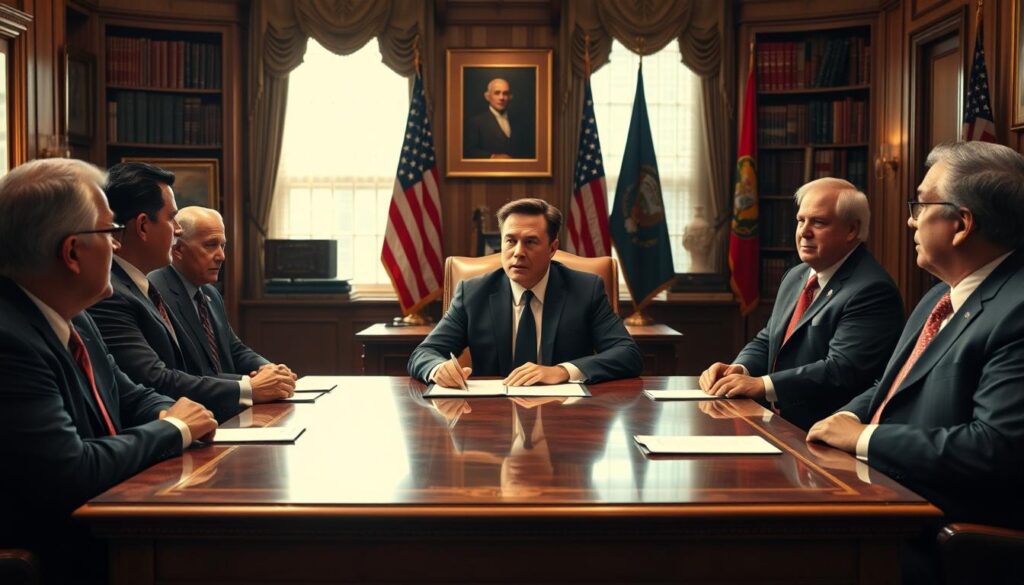
Elon Musk’s political influence has grown a lot in recent years. His impact goes beyond just business, mixing technology with government relations. He talks with leaders and gets big government contracts, making him a big player in policy.
Some key points about Musk’s government ties are:
- Spent $300 million on political campaigns
- Got $15.4 billion in government contracts in ten years
- Received $3.8 billion in federal contracts in 2024
Musk’s political moves are often debated. He supported former President Donald Trump with money and promotion. SpaceX and Tesla got a lot from government contracts, showing Musk’s skill in politics.
Musk faces regulatory hurdles but keeps pushing forward. Despite SEC and National Labor Relations Board probes, he uses his tech and politics. His role as a “special government employee” has raised questions about conflicts of interest.
Musk’s global political moves are also interesting. He backs figures like Nigel Farage and talks to far-right groups in Europe. His use of X (formerly Twitter) for politics makes his voice even louder.
Musk has changed from a tech leader to a major political force. He mixes business innovation with policy-making in a bold way.
Future Business Ventures and Growth Potentials
Elon Musk is set to change many tech fields, starting with xAI in artificial intelligence. This company, worth $50 billion as of November 2024, marks a big shift in Musk’s wealth growth. AI and new tech will likely drive his economic growth.
Neuralink and The Boring Company show Musk’s dedication to new tech. Neuralink is worth $8 billion, and The Boring Company is over $7 billion. These companies prove Musk can turn ideas into real market chances. He plans to keep investing in different tech areas to grow his wealth.
SpaceX is also key to Musk’s future, even with its $350 billion value. The company made $55 million in 2023, showing it could grow a lot. Musk focuses on investing in real assets and companies with strong products. This means he’ll keep expanding into new and innovative areas.
Musk’s business world is complex, and his wealth will grow by tackling tech changes, market ups and downs, and new trends. His quick thinking and investment in new tech will likely keep him successful.
